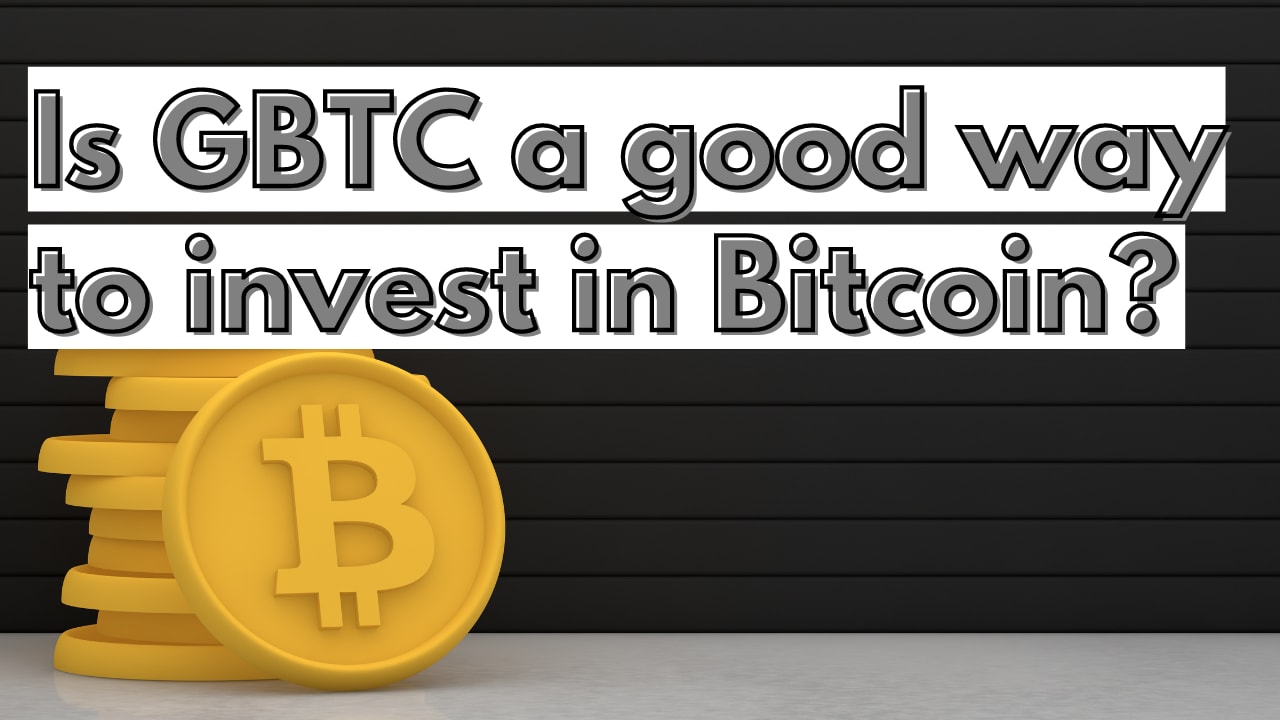Buy Grayscale Bitcoin Trust (GBTC)?

Highlights
- Grayscale owns Bitcoins on its investors' behalf and takes on the responsibility of keeping these Bitcoins safe.
- Grayscale charges an annual fee and trades at a premium.
- The prospect of Grayscale's premium vanishing makes it a very risky bet for the short-term investor.
Most brokerage accounts don’t allow you to invest in Bitcoin directly.
Often the closest you can get to investing directly in Bitcoin in your brokerage account is buying shares in Grayscale Bitcoin Trust (Ticker symbol GBTC).
Grayscale owns Bitcoins on its investors' behalf and takes on the responsibility of keeping these Bitcoins safe.
Grayscale Bitcoin Trust has accumulated more than 3% of the total supply of Bitcoin.
You cannot redeem your shares in GBTC for Bitcoin but you can sell them in the secondary market (meaning to other investors).
Roughly speaking, owning 1,000 shares of GBTC is the equivalent to owning 1 Bitcoin with some caveats.
First, Grayscale charges an annual management fee of 2%. There is no management fee when you own Bitcoin directly.
Two percent is on the high end of even actively managed funds. With Grayscale, there isn’t much active management being done aside from securing the Bitcoin.
Compare this with the 0.25% fee that iShares Gold Trust (IAU) charges.
iShares buys and secures physical Gold on its investors’ behalf the same way Grayscale Bitcoin Trust (GBTC) buys and secures Bitcoin.
In other words, iShares charges one-eighth the annual fee that GBTC charges.
I don’t think Bitcoin is 8 times more expensive to secure than Gold is.
The reason why Grayscale is able to charge this huge fee is that they are basically the only game in town if you want to own Bitcoin in your brokerage account.
The second caveat to owning Bitcoin through GBTC in lieu of direct Bitcoin ownership is that while GBTC attempts to track the price of Bitcoin, it doesn’t do so perfectly.
In fact, most of the time, the cost of 1000 shares of GBTC is greater than the cost of 1 bitcoin.
So in addition to their annual fee, there is a premium you will likely have to pay to own a bitcoin using GBTC shares compared to owning one directly.
This premium ranges by day and at one point reached more than 130% right before the height of Bitcoin mania in 2017.
Understanding GBTC's Premium
Why does GBTC trade at a premium?
Very simply, supply and demand.
Since there are often no other options to gain exposure to Bitcoin in a brokerage account, when people are hyped up about Bitcoin they have proved to be willing to pay a premium for GBTC even if it means buying the underlying Bitcoin for above the current market price.
When people are less enthused about Bitcoin, this willingness, and by extension GBTC's premium, diminishes.
In other words, GBTC's price movements are not only a reflection of movements in Bitcoin's price but also movements in sentiment around Bitcoin as well.
This dynamic makes GBTC, on average, ~20% more volatile than Bitcoin.
Another concern motivated by GBTC’s premium is: when does this premium go away?
The answer is that GBTC’s premium will likely vanish when more options become available to invest in Bitcoin.
The entrance of other options is becoming increasingly likely.
Recently, another application has been submitted to form a Bitcoin ETF.
In the event of this application's approval or any other subsequent ones, GBTC’s advantage of being the only game in town will dissipate.
This will likely force GBTC to lower its annual fee and will also cause the premium by which GBTC shares trade to fall and eventually disappear.
Is GBTC a buy?
If you’re seeking exposure to Bitcoin for a quick trade, GBTC is a very risky option.
On the other hand, if you have a long-term horizon, let’s say 3 to 5 years, and you think bitcoin is going to 200K - 300K or more, then absent other options you can make a strong argument for owning GBTC.
For example, assume bitcoin is trading at 30K a coin and 1000 shares of GBTC cost you 34K. If you choose the GBTC route you’ll be paying a premium and an annual fee. This premium will likely vanish and the annual fee will likely be reduced substantially by the time you sell. If your forecast turns out to be right and you end up selling for 200K 3 years from now, you’re probably going to be ok with the 4K premium you had to pay to establish your position.
If you have to sell in six months and the premium has disappeared by then, feelings will be hurt.
Agree or disagree ? Share your feedback.